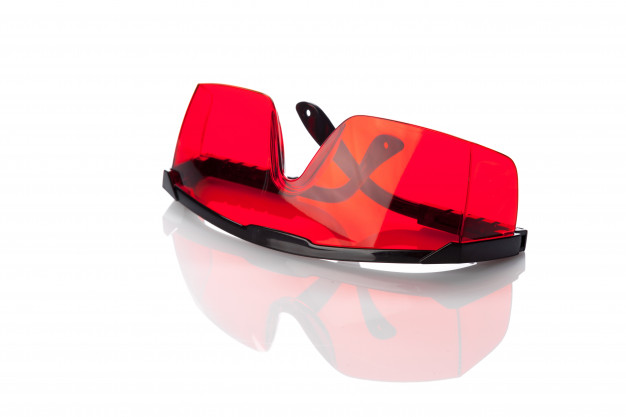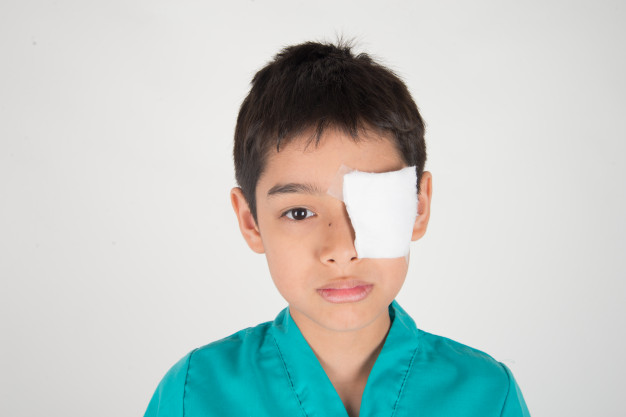Fireworks safety is key for protecting your eyes
Every year, the Fourth of July is a terrible time to be on call for ophthalmology due to the high risk of potentially blinding eye injuries from fireworks.
“During my residency, I worked at a level 1 trauma center,” said Dr. Sarah Eccles-Brown, a board-certified ophthalmologist and surgeon at Elmquist Eye Group who was stationed at Lackland Air Force Base in San Antonio, Texas. “Working on July 4th was always interesting. It kept you on your toes.”

Independence Day last year was no exception. Eccles-Brown treated a patient who had an “open globe” injury – which she describes as when the internal parts of the eye are open to the external world – caused by fireworks.
Standard initial treatment for open globe injuries includes covering the eye with a rigid Fox eye shield for protection, an orbital CT scan, IV antibiotics, a tetanus shot and emergency eye surgery to sew the globe back together.
The patient lost his eye and is now using a prosthetic. “It’s devastating to lose your vision, and completely preventable,” Eccles-Brown said. “I’m fond of saying I will disinherit my children if I find out they ever use fireworks. It’s just that dangerous.”
According to the U.S. Consumer Product Safety Commission, fireworks caused eight deaths and nearly 13,000 injuries in 2017, the most recent statistics available, with 14% of those injuries involving the eyes. Children 15 and younger accounted for 36% of the total injuries. Half of those injured who were treated at the ER were under age 20.
In the most severe cases, fireworks can rupture the globe of the eye, cause chemical and thermal burns, corneal abrasion and retinal detachment, all of which can cause permanent eye damage and vision loss.
The injuries are not unlike eye injuries Eccles-Brown saw in her military service at Lackland and Eglin Air Force Base treating soldiers who had eye injuries from explosions and chemical exposure from combat.
“An IED explosion can have a similar effect,” she said. “You can also have chemical burns on the surface of the eye cause severe scarring and decreased vision.”
According to the American Academy of Ophthalmology, fireworks mishaps account for approximately 10,000 visits to emergency rooms each year, and most of them involve children who suffer thousands of eye injuries. Not surprisingly, the most disabling injuries occur with illegal firecrackers, but the highest number of injuries happen at home with the legal fireworks parents buy for kids.

“I would not recommend fireworks at home, personally,” Eccles-Brown said. “If you choose to do it at home, use eye protection for everyone around.”
Sunglasses or glasses do not provide enough protection. She recommends shatterproof safety glasses, keeping fireworks away from young children, and not using fireworks with any substances that could impair judgement.

Eccles-Brown says fireworks often considered safe for children, like sparklers, are not. Sparklers burn at more than 2,000 degrees Fahrenheit, hot enough to melt copper. A sparkler mishap caused a fireworks death in 2017.
“My mom gave us sparklers when I was a kid,” she said. “I won’t be continuing that tradition. It’s especially dangerous to have any kind of fire near the eyes.”
To ensure a safer summer holiday season, there are several firework myths that must be debunked, including:
- Myth 1: Smaller fireworks are safer fireworks – The classic sparkler and even tiny poppers or snappers can pose dangers.
- Myth 2: You are out of danger if you aren’t lighting it or throwing it – Bystanders are just as much at risk for injury when fireworks enter the equation. Falling embers, an upturned roman candle or careless aim of a bottle rocket can result in injury.
- Myth 3: No need to fear the dud – Even if it looks like a dud, there’s a chance it may still explode.
- Myth 4: Fourth of July isn’t complete without fireworks – Considering the risks involved, the use of fireworks simply isn’t worth it. Skip the at-home show and consider enjoying a professional display instead.

Fireworks-related eye injuries can combine blunt force trauma, heat burns and chemical exposure. Bottle rockets, firecrackers, sparklers and roman candles account for most eye injuries.
If an eye injury from fireworks occurs, it should be considered a medical emergency.
- Seek medical attention immediately.
- Do not rub your eyes. Pressure can do more harm than good when it comes to eye injuries.
- Do not rinse your eyes. If hot ash falls in the eye, rinse it with water, but never, ever attempt to remove an object stuck in the eye.
- Do not apply pressure. Instead, shield the eye by covering with a paper cup or something similar that will not contact the eye. Gently tape it there for a temporary eye patch.
Because of her experience, Eccles-Brown recommends leaving the firing of fireworks to the professionals and enjoying the display from afar.


With more than 25 years of service to the Southwest Florida community, Elmquist Eye Group offers experienced doctors who are dedicated to patient care. Dr. E. Trevor Elmquist, Dr. Kate Wagner, Dr. Sarah Eccles-Brown and Dr. Nina Burt of Elmquist Eye Group are available to answer your questions. With three U.S. military veterans leading the practice, rest assured knowing that Elmquist Eye Group’s team stands ready to serve you with knowledge and experience right here in Southwest Florida. For more information, visit www.Elmquist.com, call 239-936-2020 or stop by an Optical Boutique location in Fort Myers or Cape Coral.



